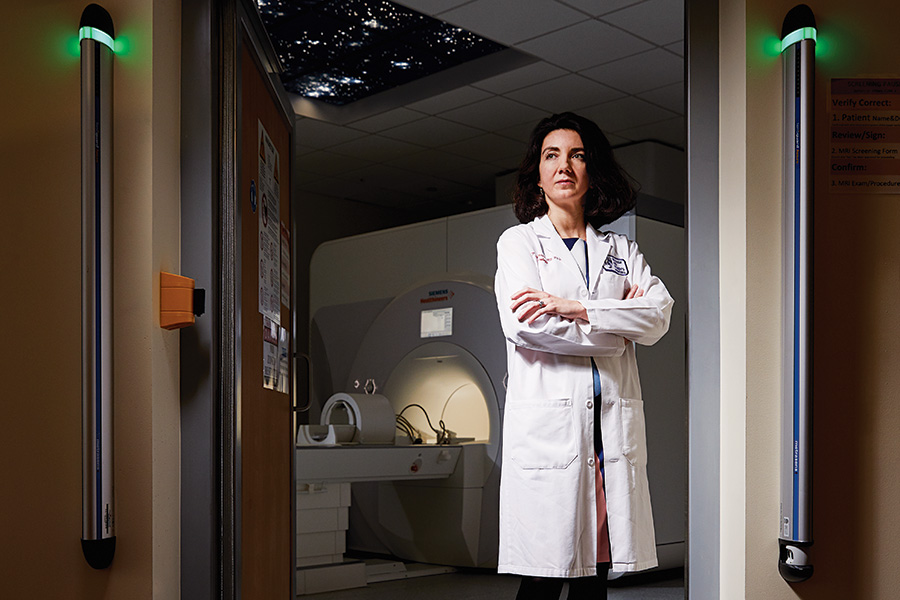The Case of the Restless Sleeper
Dr. Paula Voinescu of Brigham and Women's Hospital used a brand-new, state-of-the-art MRI machine to diagnose the cause of a patient's seizures.

Neurologist Paula Voinescu, of Brigham and Women’s Hospital. / Photo by Ken Richardson
Looking back, the signs had been there for years. The unexplained neck pains. The backaches. Waking up on the floor of his bedroom, wondering how he got there. But Steve* would have to travel more than 10,000 miles, deep into the Australian outback, before anyone would realize the dangers he faced every night when he fell asleep.
As a Colgate University junior studying abroad, the trip into the wilderness was meant to be the highlight of Steve’s year in Australia—until one morning, when he awoke to find his fellow adventurers huddled around him, looking concerned. “What’s going on? Why’d you all wake me up so early?” Steve asked, confused. They explained to him that an ambulance was on its way, though it might take hours to arrive. He’d had a massive seizure in his sleep.
Back in Long Island, Steve’s mother got the call and immediately hopped on a plane to bring her son home. Then the search for answers began. In an attempt to pinpoint the origin of the seizures, doctors in New York ordered MRIs and watched Steve at night with electrodes attached to his skull, but they couldn’t find anything to indicate that surgery would help. Medication to help minimize the risk of epileptic episodes, they told him, would be his best bet. And yet things only got worse. Within a year, Steve was seizing day and night. Not knowing when it might happen next, he and his mother lived in constant fear. For the next five years, in fact, the two would be “joined at the hip,” she says, desperate to manage his unpredictable convulsions.
By early 2018, they had moved to the Boston area and were seeking the advice of top medical experts here. When they first met Paula Voinescu, a neurologist at Brigham and Women’s Hospital, they mistook her for a nurse: They’d never had a doctor come into the waiting room before. From there, Steve’s mother recalls, “She spent hours with us. She was absolutely determined. She said, ‘We’re going to solve this.’”
Determined is the right way to describe Voinescu. By the time she met Steve, she’d already spent days reviewing his previous MRIs and watching the videos taken of him while he slept, which she thought indicated that his left temporal lobe was the origin point of the seizures. That area of the brain is responsible for language and short-term memory, so it’s not typically a place you want to go poking around. But Voinescu suspected there might be an operable lesion there that had been missed in New York.
Consulting with her team, Voinescu decided that Steve was a prime candidate for the Rolls-Royce of imaging machines: the Brigham’s brand-new, high-res 7T MRI, one of just a few in the country. After the procedure, the doctor pored over hundreds of pages of results before she found exactly what she was looking for: “a very tiny lesion that anyone could have missed on a 3T MRI,” she says. When Voinescu called Steve’s mother and told her the news, she couldn’t believe it: No one had ever uttered the word “curable” before. In May 2018, doctors performed brain surgery on Steve to remove the lesion—and since then, he’s been seizure-free.
*Name has been changed.


